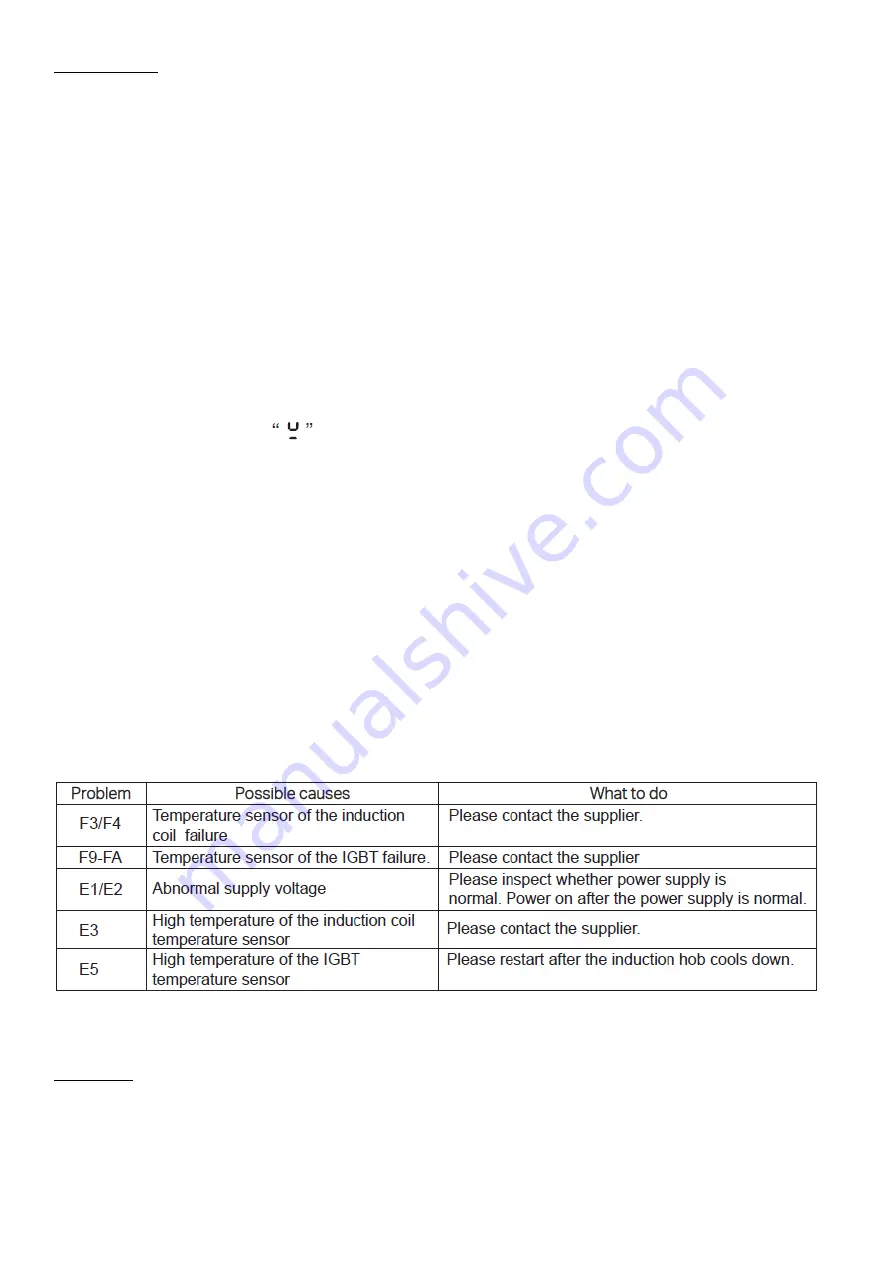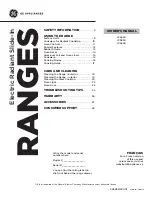
Hints and Tips
1. The induction hob cannot be turned on.
Make sure the induction hob is connected to the power supply and that it is switched on.
Check whether there is a power outage in your home or local area. If you’ve checked everything and the problem
persists, call a qualified technician.
2. The touch controls are unresponsive.
The controls are locked: Unlock the controls. See section using your induction cooktop for instructions.
3. The touch controls are difficult to operate.
There may be a slight film of water over the controls or you may be using the tip of your finger when touching the
controls:
Make sure the touch control area is dry and use the ball of your finger when touching the controls.
6. The induction hob makes a low humming noise when used on a high heat setting.
This is caused by the technology of induction cooking: This is normal, the noise should quieten down or disappear
completely when you decrease the heat setting.
7. Fan noise coming from the induction hob.
A cooling fan built into your induction hob has come on to prevent the electronics from overheating. It may continue to
run even after you’ve turned the induction hob off: This is normal and needs no action. Do not switch the power to the
induction hob off at the wall while the fan is running.
8. Pans do not become hot and
appears in the display.
The induction hob cannot detect the pan because it is not suitable for induction cooking. The induction hob cannot
detect the pan because it is too small for the cooking zone or not properly centred on it: Use cookware suitable for
induction cooking. See section “Choosing the Right Cookware”. Centre the pan and make sure that its base matches
the size of the cooking zone.
9. The induction hob or a cooking zone has turned itself off unexpectedly, a tone sounds and an error code is
displayed (typically alternating with one or two digits in the cooking timer display).
Technical fault: Please note down the error letters and numbers, switch the power to the induction hob off at the wall,
and contact a qualified technician.
4. The glass is being scratched.
Tough-edged cookware. Unsuitable, abrasive scourer or cleaning products being used: Use cookware with flat and
smooth bases. See “Choosing the Right Cookware” and “Care and Cleaning” for further advice.
5. Some pans make crackling or clicking noises.
This may be caused by the construction of your cookware (layers of different metals vibrating differently): This is
normal, the noise should quieten down or disappear completely.
Failure Display and Inspection:
If an abnormality comes up, the induction hob will automatically enter the protective state and display
corresponding protective codes:
The above are the judgment and inspection of common failures.
Please do not disassemble the unit by yourself to avoid any danger or damage to the induction hob.
Installation
Selection of Installation Equipment
Cut out the work surface according to the sizes shown in the drawing. For the purpose of installation and use, a
minimum of 5cm space should be preserved around the hole. Ensure the thickness of the work surface is at least
35mm. Please select a heat-resistant work surface material to avoid deformation caused by the heat radiation from the
hotplate.






























